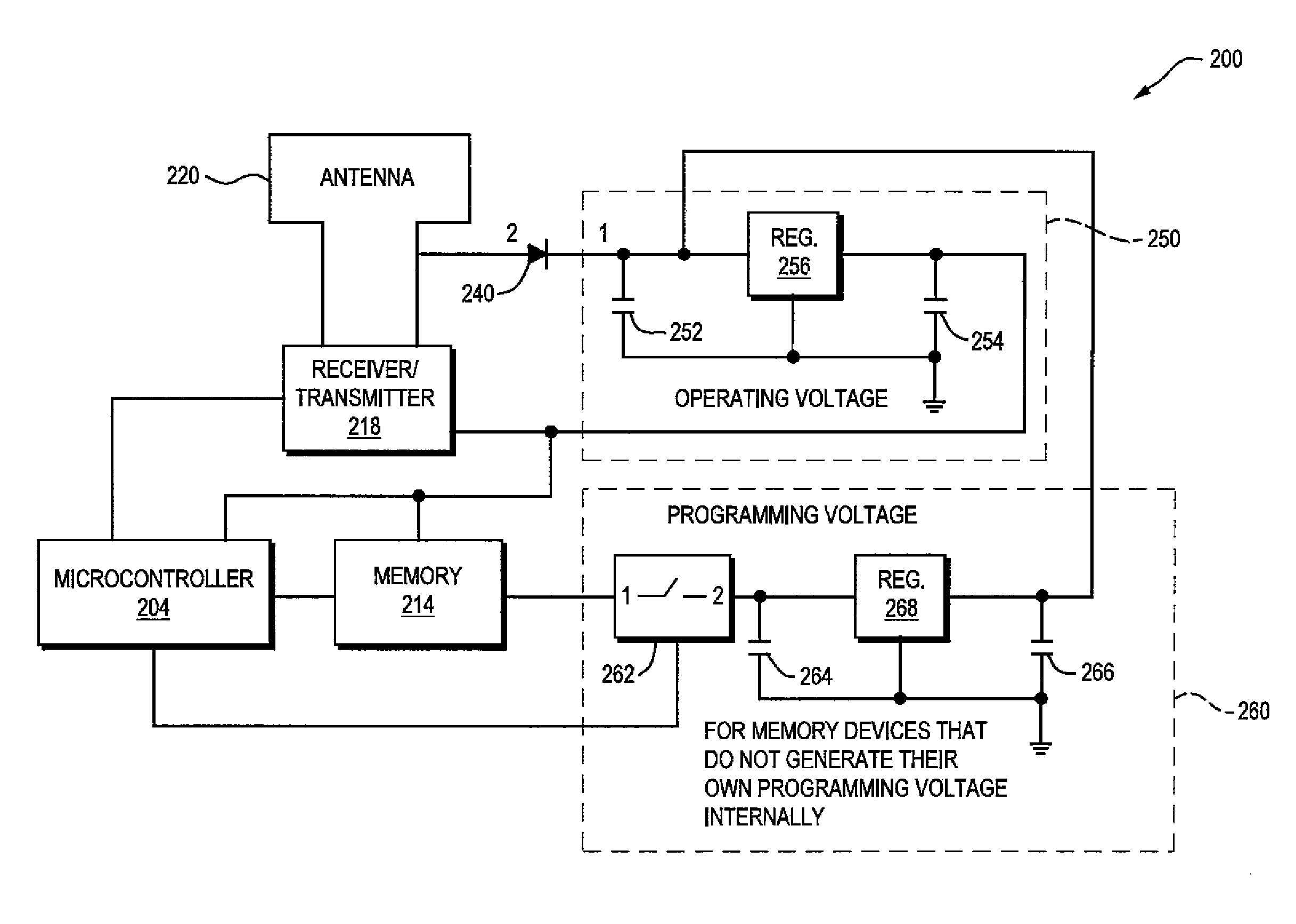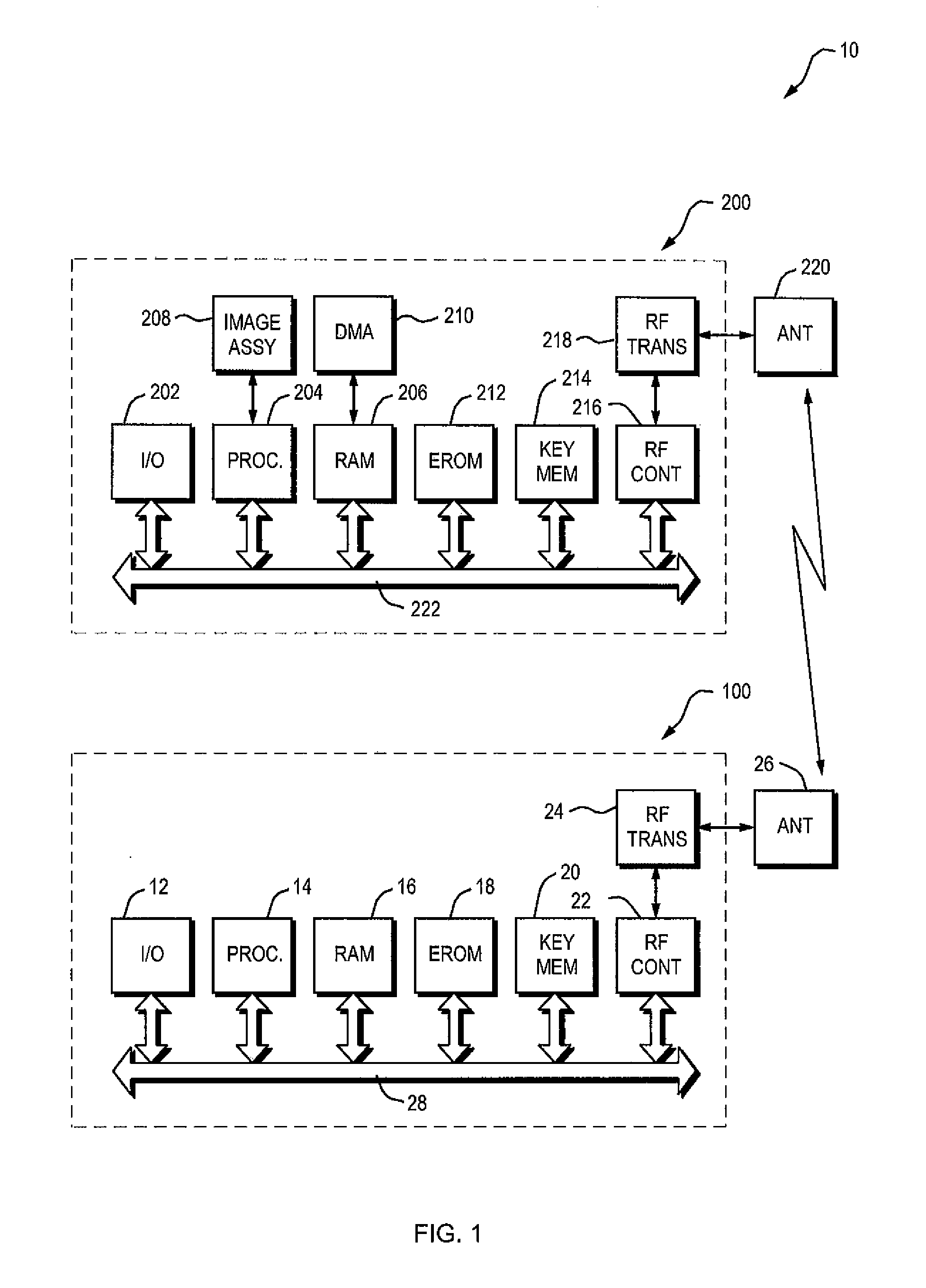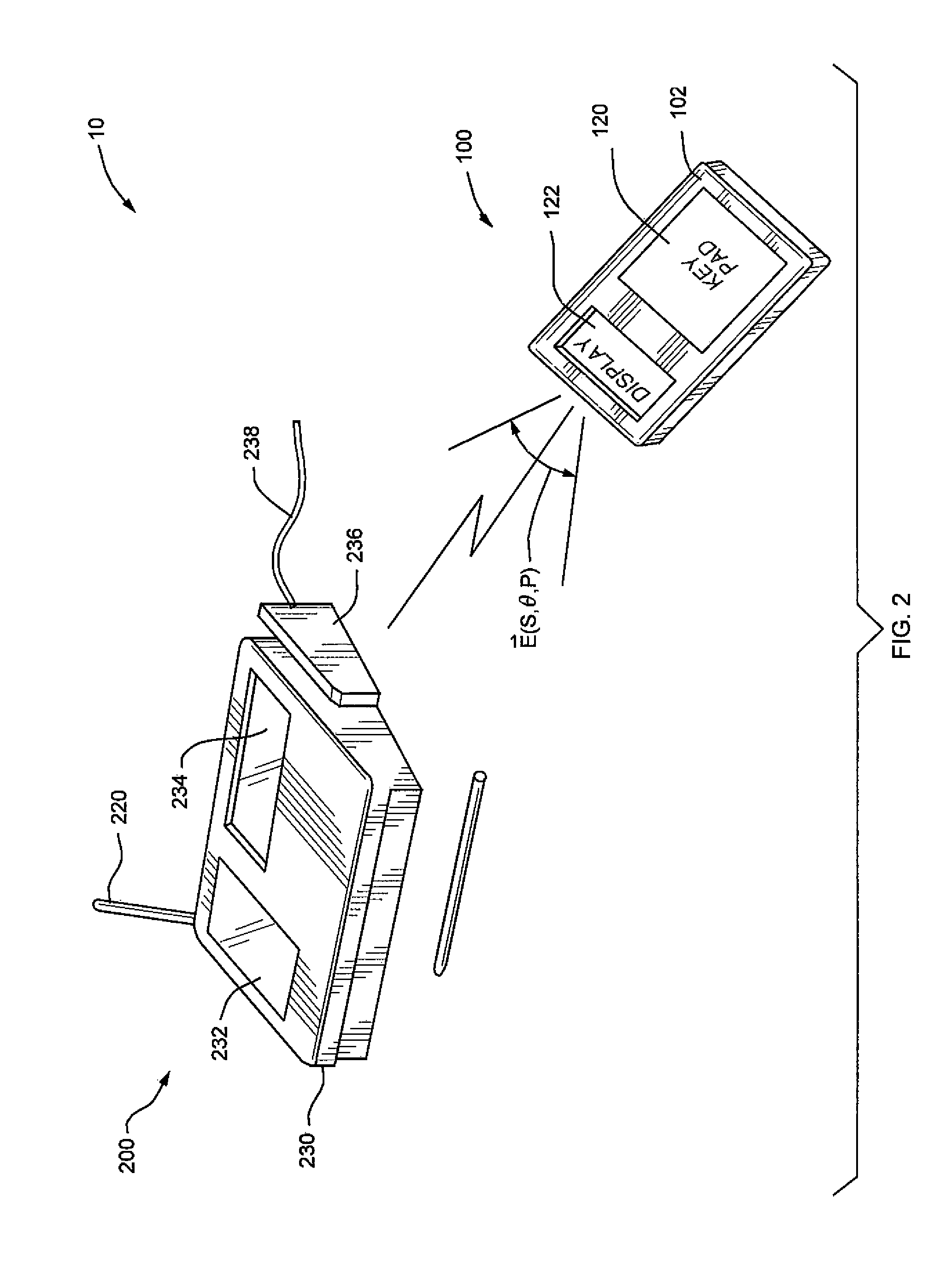Portable keying device and method
a keying device and portability technology, applied in the field of transacting terminals, can solve problems such as deleting security information, critical security issue, and tampering protection
- Summary
- Abstract
- Description
- Claims
- Application Information
AI Technical Summary
Benefits of technology
Problems solved by technology
Method used
Image
Examples
second embodiment
[0032]As embodied herein, and depicted in FIG. 5A, a diagrammatic depiction of electronic terminal 200 in accordance with the present invention is disclosed. In this embodiment, key memory 214 requires an external programming voltage. As described above, terminal 200 includes processor 204, key memory 214, transceiver 218 and antenna 220. In this example it is assumed that terminal 200 is boxed in a shipping container of some sort. Thus, terminal 200 is not connected to any external power supply. However, terminal 200 includes diode 240, normal operating voltage supply 250 and programming voltage supply 260. Normal operating voltage supply 250 includes capacitor 252, capacitor 254, and voltage regulator 256. Programming operating voltage supply 260 includes capacitor 262, capacitor 264, and voltage regulator 266. When portable device 100 transmits an RF signal to terminal 200, diode 240 rectifies the AC-RF signal and prevents any return signal from damaging the RF components. The re...
third embodiment
[0033]As embodied herein, and depicted in FIG. 6, a diagrammatic depiction of an electronic terminal in accordance with the present invention is disclosed. In this embodiment, battery 242 is included within terminal 200 to provide a normal operating voltage. Diode 240 is included to rectify the RF signal and prevent any return signals from damaging the RF components. Programming operating voltage supply 250 is included to provide programming voltage to key memory 214. Programming operating voltage supply 250 includes capacitor 254, capacitor 256, and voltage regulator 258. When portable device 100 transmits an RF signal to terminal 200, diode 240 rectifies the AC-RF signal. The resultant DC signal is used to charge up capacitors 254 and 256. Again, at the proper time, e.g. during step S308 (See FIG. 3), processor 204 activates switch 252 and supply 250 provides memory 214 with the programming voltage required to store the new encryption key therein.
fourth embodiment
[0034]As embodied herein, and depicted in FIG. 7, a diagrammatic depiction of an electronic terminal in accordance with the present invention is disclosed. In this embodiment, the required programming voltage is supplied internally. Battery 240 is included within terminal 200 to provide both the normal operating voltage and the programming voltage. In this embodiment battery 240 is coupled to programming voltage supply 250. Programming voltage supply 250 is identical to those depicted in FIG. 5A, FIG. 5B and FIG. 6. Since battery 240 supplies DC voltage to capacitors 254 and 256, no rectifying diode is needed. Yet again, at the proper time, e.g. during step S308 (See FIG. 3), processor 204 activates switch 252 and programming supply 250 provides memory 214 with the programming voltage required to store the new encryption key therein.
[0035]The present invention addresses the needs discussed above. The present invention provides a system and method for securely reprogramming the secur...
PUM
 Login to View More
Login to View More Abstract
Description
Claims
Application Information
 Login to View More
Login to View More - R&D
- Intellectual Property
- Life Sciences
- Materials
- Tech Scout
- Unparalleled Data Quality
- Higher Quality Content
- 60% Fewer Hallucinations
Browse by: Latest US Patents, China's latest patents, Technical Efficacy Thesaurus, Application Domain, Technology Topic, Popular Technical Reports.
© 2025 PatSnap. All rights reserved.Legal|Privacy policy|Modern Slavery Act Transparency Statement|Sitemap|About US| Contact US: help@patsnap.com



